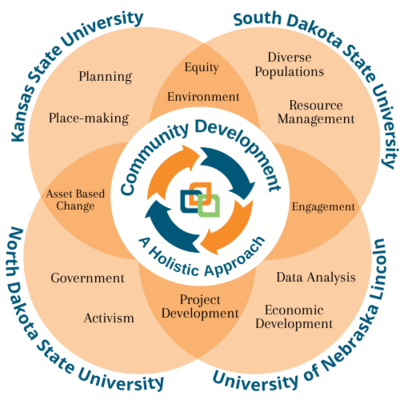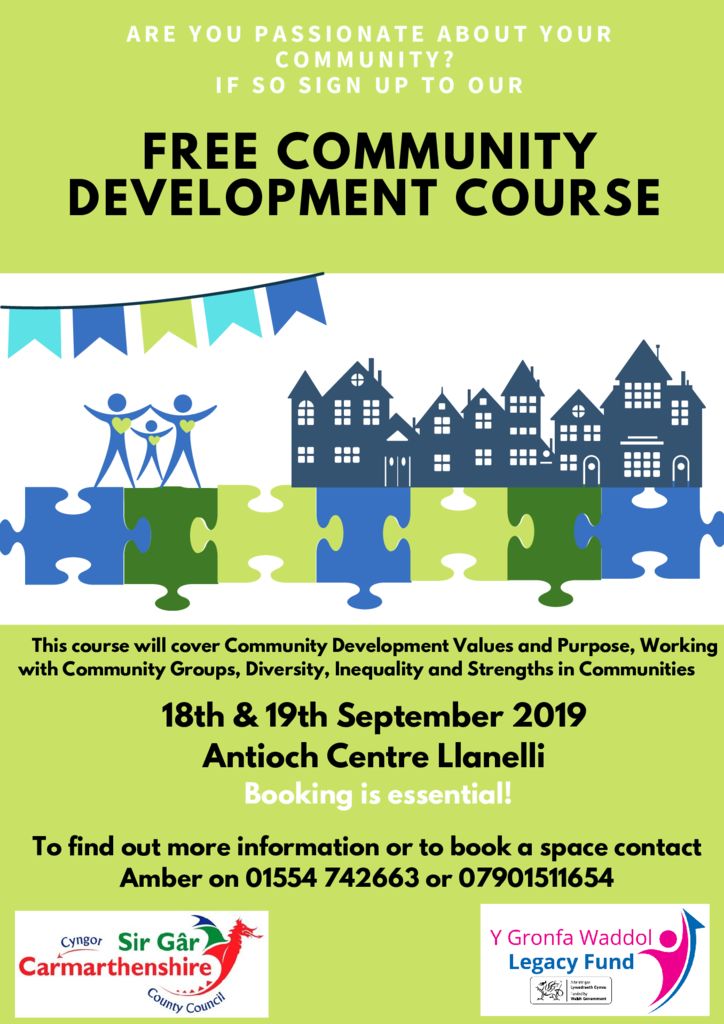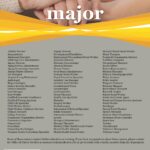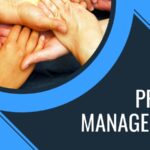Remember that feeling? That gnawing sense that you want to do more? You see problems in your local area, or hear about global issues, and your heart aches to help. You have good intentions, a spark of passion, but the "how" feels like a giant, impenetrable wall. That was me, not so long ago. I was a well-meaning enthusiast, eager to make a difference, but utterly clueless about where to begin.
Then, I stumbled upon it: a Community Development Course. It wasn’t just a random online ad; it felt like a beacon, promising to turn my vague aspirations into actionable plans. At first, I was skeptical. Would it be dry theory? Would it be too academic for someone like me, who just wanted to roll up their sleeves? What I found, however, was a journey that completely reshaped my understanding of change, connection, and the incredible power of people working together.
The Leap of Faith: Signing Up for Community Development Training
Taking that first step felt huge. I researched various programs, looking for something that emphasized practical skills and real-world application, not just textbooks. I wanted community development training that truly taught you how to build, not just talk about building. When I finally enrolled, a mix of excitement and nerves buzzed through me. I imagined a room full of seasoned activists, and worried I’d be the lone novice.
Boy, was I wrong! The first day revealed a diverse group: young graduates, experienced volunteers, local leaders, and even some folks (like me) who just felt a deep pull to contribute meaningfully. Our instructors weren’t just academics; they were practitioners, people who had spent years on the ground, witnessing the highs and lows of community work. Their stories, filled with both triumphs and hard-won lessons, immediately made the learning feel tangible and incredibly human.
What I Actually Learned: Unpacking the "How-To" of Social Change
The course wasn’t about quick fixes or grand gestures; it was about understanding the intricate dance of people, resources, and shared goals. Here’s a peek into the core lessons that genuinely changed my perspective:
1. It’s Not About My Ideas, It’s About Their Needs: The Art of Needs Assessment
Before this course, my approach was often, "I see a problem, so I should provide this solution." The first major lesson shattered that mindset. We learned that effective community development begins with deep listening and understanding. This means conducting thorough "needs assessments."
It wasn’t just about surveys; it was about:
- Active Listening: Truly hearing what people in a community express as their challenges and their dreams.
- Asset Mapping: Identifying existing strengths, skills, and resources within a community, rather than just focusing on what’s lacking. Every community, no matter how disadvantaged, has incredible assets.
- Participatory Research: Involving community members in the research process itself, making them co-creators of understanding, not just subjects.
This changed everything. It taught me humility and the crucial understanding that sustainable change comes from within, not from external imposition.
2. From Vague Dreams to Concrete Steps: Project Planning for Real Impact
Before, "making a difference" was a fuzzy concept. The course broke it down into manageable, strategic components. We delved into:
- Goal Setting: How to set SMART (Specific, Measurable, Achievable, Relevant, Time-bound) goals that genuinely address identified needs.
- Resource Mobilization: Beyond just money, how to identify and leverage human capital, local materials, and partnerships. This taught me that creativity and collaboration are often more valuable than a huge budget.
- Action Planning: Developing step-by-step strategies, assigning roles, and setting timelines. It was like learning to build a sturdy house, brick by brick, rather than just imagining a beautiful one.
- Sustainable Development: A huge emphasis was placed on designing projects that wouldn’t just solve a problem temporarily but would empower the community to sustain the solution long-term. This meant thinking about local ownership and capacity building from day one.
3. Who Holds the Keys? The Power of Stakeholder Engagement
One of the most eye-opening modules was about identifying and engaging "stakeholders." These aren’t just the people you think are important; they’re anyone who is affected by, or can affect, your initiative. We learned:
- Identifying Key Players: From local government officials and business owners to cultural leaders and marginalized groups, everyone has a voice and a role.
- Building Relationships: It’s not about one-off meetings; it’s about fostering trust, mutual respect, and ongoing dialogue.
- Conflict Resolution: Community work isn’t always harmonious. We practiced strategies for navigating disagreements and finding common ground, turning potential roadblocks into opportunities for deeper understanding.
This made me realize that community work is as much about diplomacy and relationship-building as it is about project management.
4. Beyond the Initial Spark: Monitoring, Evaluation, and Learning
It’s easy to get excited at the start of a project, but how do you know if it’s actually working? And how do you learn from your successes and failures? We explored:
- Indicators of Success: Defining what success looks like before you start.
- Data Collection: Simple, effective ways to gather information to track progress.
- Adaptive Management: The crucial lesson that plans often need to change. Being flexible, learning from real-time feedback, and adjusting your approach is not a sign of failure, but of intelligent practice.
This instilled in me a sense of continuous improvement and accountability, vital for any genuine effort to create social impact.
The Experience: More Than Just Lectures
What truly made this community development course exceptional wasn’t just the curriculum, but the way it was delivered.
- Case Studies & Role-Playing: We didn’t just read about challenges; we dissected real-world scenarios, debated strategies, and even role-played difficult conversations. This helped bridge the gap between theory and practice.
- Group Projects: Working with classmates from diverse backgrounds was invaluable. We learned to collaborate, compromise, and appreciate different perspectives – skills essential for any community setting.
- Guest Speakers: Local community leaders, NGO founders, and government representatives shared their lived experiences, offering raw, unfiltered insights that you just can’t get from a textbook.
- Field Visits: We visited local initiatives, seeing firsthand how theory translated into action, observing both the successes and the ongoing struggles. It was inspiring to see people on the ground making things happen.
It wasn’t always easy. There were moments of frustration, especially when grappling with the complexities of systemic issues. But through it all, there was a constant sense of support from both instructors and peers. We were all on a journey of learning community development together.
My Transformation: From Well-Meaning to Well-Equipped
Finishing the course felt like stepping out with a new pair of glasses. I still saw the problems, but now I also saw the pathways, the opportunities, and most importantly, the immense potential within every community.
I gained:
- Practical Skills: The ability to conduct a needs assessment, design a project, engage stakeholders, and measure impact. These aren’t just abstract concepts; they are tools I can (and do) use.
- A Network of Passionate People: The connections I made with my classmates and instructors are invaluable. We continue to share ideas, offer support, and even collaborate on new initiatives.
- Confidence: That initial feeling of being overwhelmed has been replaced with a sense of capability. I know I don’t have all the answers, but I now know how to find them, how to ask the right questions, and how to bring people together.
- A Deeper Understanding of Empowerment: I learned that true community development isn’t about "helping" people in a paternalistic way; it’s about empowering them to identify their own solutions and build their own future. It’s about capacity building and fostering self-reliance.
Since completing the course, I’ve volunteered with a local non-profit focusing on youth mentorship, applying the skills I learned to refine their program evaluation. I’ve also started conversations in my own neighborhood about creating a community garden, using those early lessons on needs assessment and stakeholder engagement. It’s small steps, but they are informed steps.
Should You Consider a Community Development Course?
If you resonate with my initial feelings – that burning desire to make a difference, but a lack of clarity on how – then my answer is a resounding yes.
A community development course isn’t just for those aiming for a career in NGOs or social work (though it’s fantastic for that!). It’s for:
- Volunteers who want to maximize their impact.
- Local leaders looking to strengthen their communities.
- Anyone who feels a responsibility to contribute positively to the world around them.
- Individuals seeking to understand the root causes of issues and work towards sustainable development.
It’s an investment, not just in a certificate, but in your ability to be an effective agent of change. It provides the framework, the tools, and the philosophical grounding to move beyond good intentions and into meaningful action.
It transformed my scattered good intentions into focused, powerful action. It taught me that real change isn’t just about grand gestures; it’s about consistent, informed, and deeply collaborative effort. It taught me how to truly learn community development not as a theory, but as a living, breathing process of connection and collective growth. And honestly, it’s one of the best decisions I’ve ever made.



